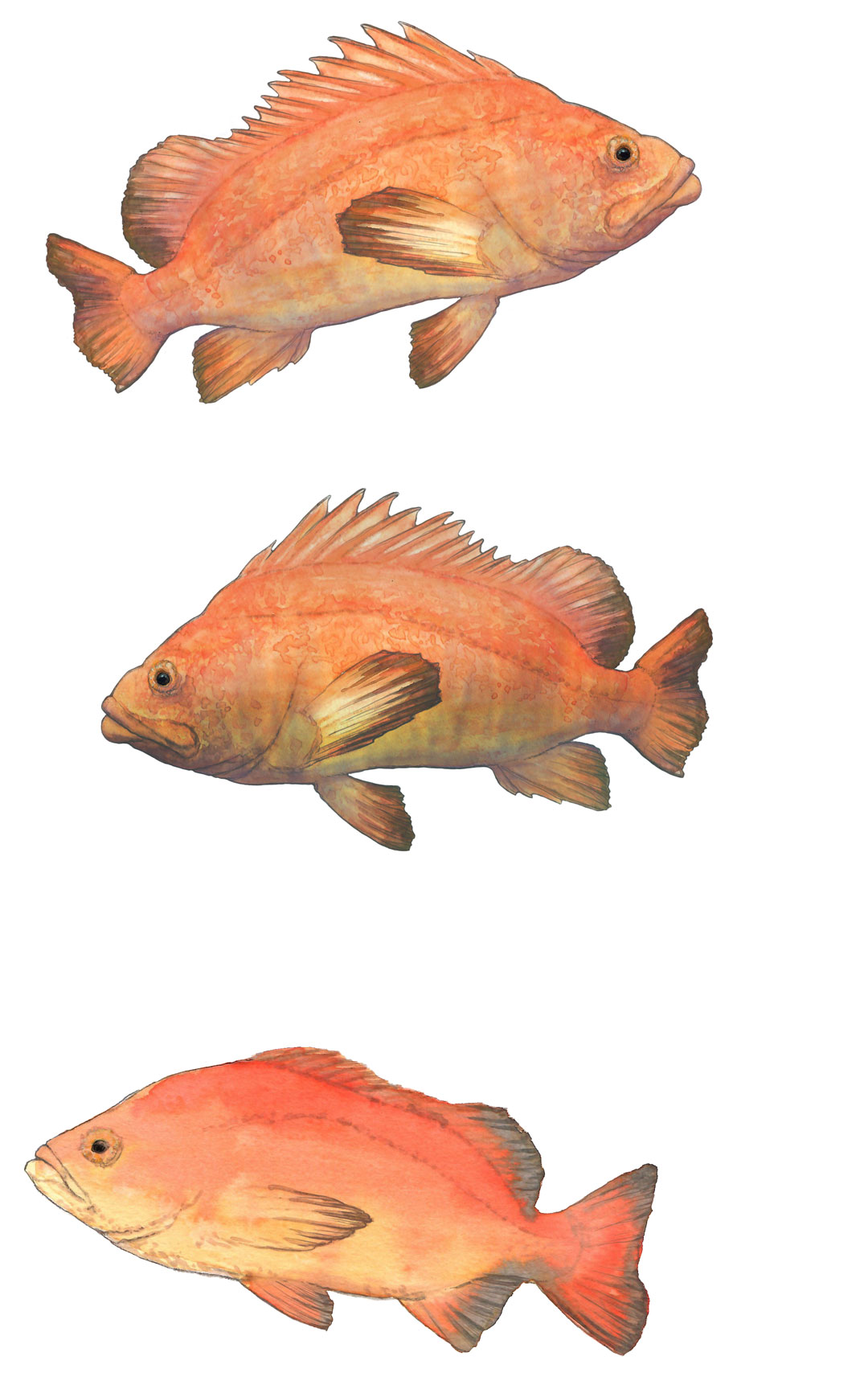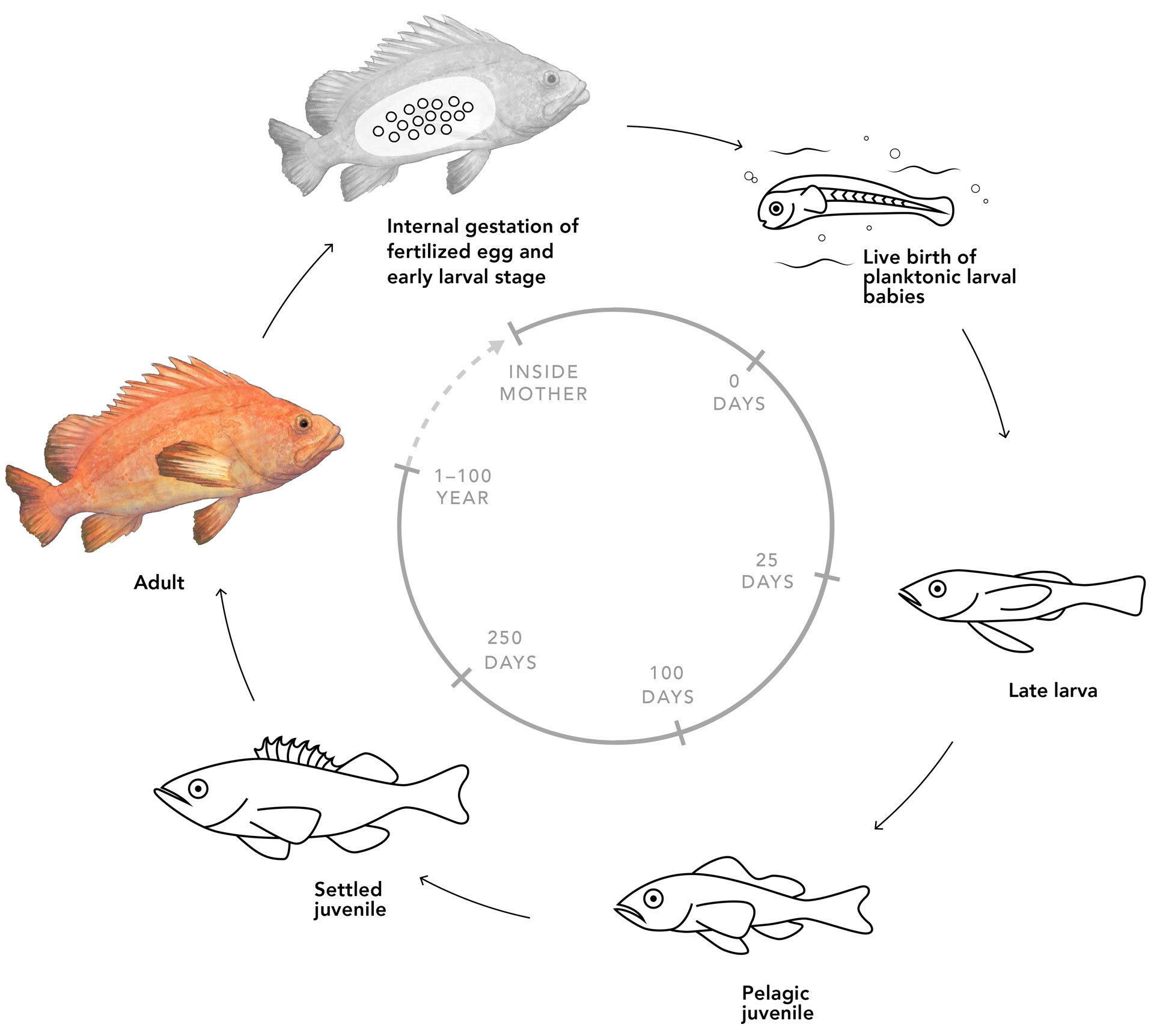Old and Grumpy Fish
Rockfish is a generic term for the genus Sebastes, with over 100 species worldwide, with at least 70 of those in the Northeast Pacific. Archaeological sites among the small islands of Barkley Sound on the west coast of Vancouver Island (analyzed in 2014) identified twelve different rockfish species just in that small area. Twenty-eight species are associated with the Salish Sea. The names of the species tend to identify them by color; there are yellowtail and yelloweye rockfish; blue and black and copper rockfish; tiger, canary, red stripe and silverback rockfish. There are also widow, china and quillback rockfish. Though their colors change they all have a broad body with spiny dorsal fins and fleshy downturned lips making these long-lived fish seem particularly old and grumpy.
While some rockfish live in the deeper ocean, rockfish are associated with the kelp forest. This is their home. They are seen as a sign of health or decline of their preferred habitat: the near shore waters in Nereocystis and Macrocystis territory. Some rockfish spend their entire lives at the same site, making a home among the rocks, sea mount cliff faces, and canyons at the ocean bottom. The role of the kelp forest for the lives of rockfish can be detected in the carbon in their flesh. Isotopes can be analyzed to determine whether a fish’s diet is kelp-derived carbon or carbon associated with a fishier diet, i.e. higher up in the trophic web. Interestingly, as rockfish were studied along the west coast of Vancouver in conjunction with healthy kelp forests compared to kelp impoverished sites, the healthier the kelp forest, the less direct kelp-derived carbon is found in their flesh. The explanation is that within a healthy kelp forest, either Macrocystis or Nereocystis, with the associated understory kelps of Pterygophora and others, phytoplankton, larvae, juvenile fish and smaller schooling fish abound. With the added diversity of prey for rockfish, they tend to eat higher on the trophic level, feeding on small fish and crustaceans and larvae who in turn prosper on the algal detritus and nutrients associated with the kelp.






